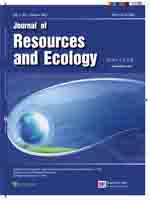The severest drought on record occurred in southwestern China from September 2009 until March 2010. In order to measure the impact the drought imposed on vegetation, we developed an evaluation indicator called the Vegetation Index Anomaly (VIA) based on MODIS/EVI. The tempo-spatial pattern of this impact was analyzed. Given that this impact may be modulated by many factors, the responses of different vegetation types (woodland, grassland and cropland), and the spatial pattern of meteorological drought were also analyzed. Results show that more than 50% of vegetation suffered because of this drought event, but there was significant tempo-spatial variability in the range and intensity of impact. This variability may be caused by many factors. Of the three major vegetation types, cropland was the most sensitive to drought, followed by grassland and then woodland. In addition, meteorological factors (precipitation and air temperature) also played a role; however, obvious differences exist between the spatial distribution pattern of drought-stricken vegetation and that of meteorological drought, which further demonstrates the intervention of other factors besides meteorological factors. So compared to meteorological drought, the vegetation index may be more useful for measuring the actual intensity, duration and impact of drought events. The limitations of vegetation indices are also considered.
How to translate text using browser tools
1 March 2012
Detecting Effects of the Recent Drought on Vegetation in Southwestern China
Zhang Jinghua,
Jiang Luguang,
Feng Zhiming,
Li Peng
ACCESS THE FULL ARTICLE

Journal of Resources and Ecology
Vol. 3 • No. 1
March 2012
Vol. 3 • No. 1
March 2012
drought monitoring
EVI
NDVI
Southwestern China
Vegetation Index Anomaly





